PS4 Pro Review
PS4 Pro Review Review
Still worth a purchase?
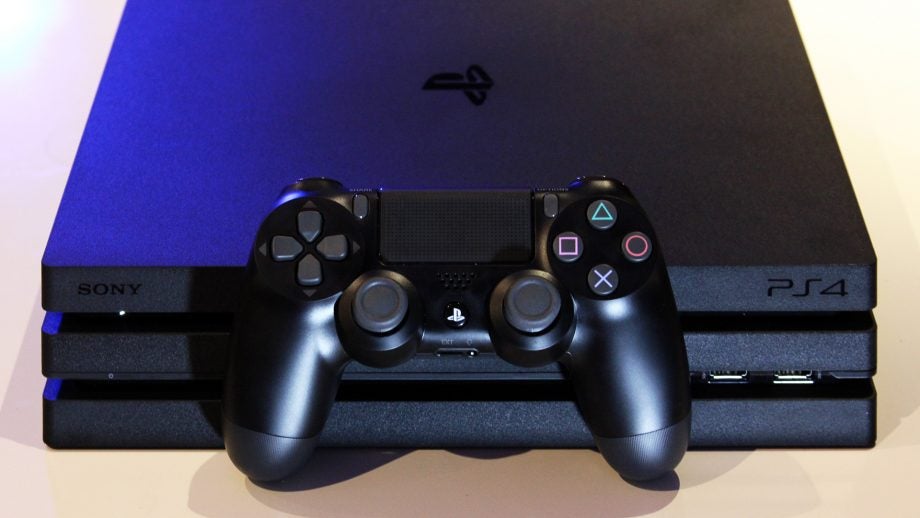
Verdict
The PS4 Pro is the undisputed console champ no longer, but if you’re looking for a step up into 4K gaming, it’s still the best deal in town.
Pros
- Stunning graphics with 4K and HDR
- Quieter
- Games load more quickly
- Enhances some PS4 and PSVR games
Cons
- No 4K Blu-ray
- Power and eject buttons feel cheap
Key Specifications
- Review Price: £349.00
- 4K and HDR
- 1TB storage
- Release date: Out Now
The PS4 Pro is Sony’s supercharged version of the PS4. Not a true next-generation machine in terms of features or horsepower, but a high-performance variant designed to dish out smoother frame rates, 4K pictures and high dynamic range (HDR).
Released at the tail end of 2016, it’s now established as Sony’s high-end gaming console, with an impressive and growing library of games that use its extra graphical grunt. The only problem for PS4 Pro is that it’s no longer the beefiest super-console on the block. Microsoft’s Xbox One X has it beaten on raw CPU and graphics performance. It has the power to run many games at native 4K resolutions, where the PS4 uses ingenious visual trickery to create something that closely resembles 4K. Has the PS4 Pro’s limelight been stolen by Microsoft’s new machine then?
Not really. While it’s no longer the most powerful console on the planet, the PS4 still dishes out astounding-looking games. In fact, you could argue that it hits the sweet spot on price and performance, both for owners of 1080p and 4K screens.
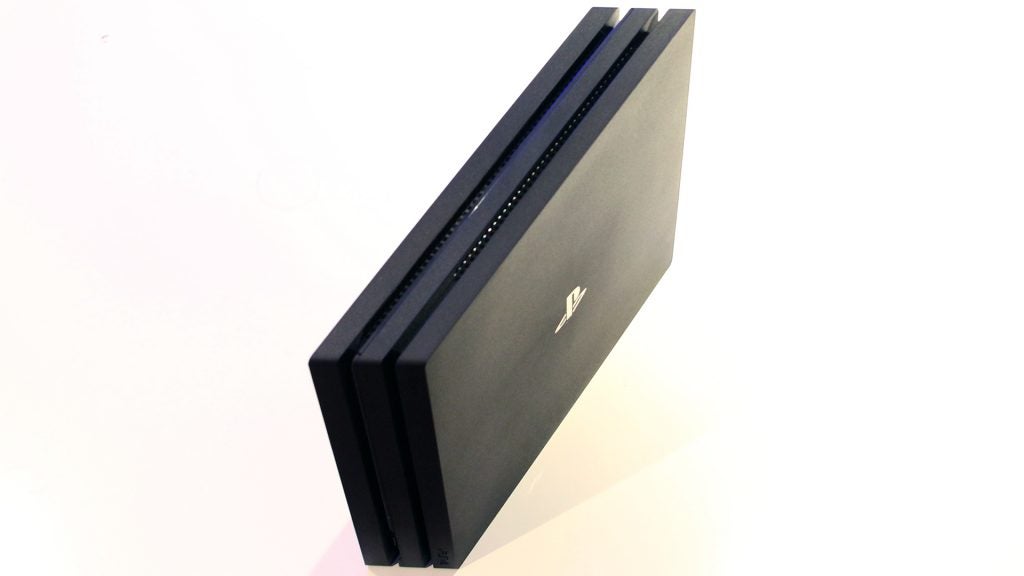
Sony PS4 Pro – Design and features
- PS4 Pro is an enhanced version of the original PS4
- The console is capable of 4K gaming with HDR visuals
- A much larger, and louder machine than its sibling
If you’re used to the standard PS4 or the dinky Xbox One S and Xbox One X, then the PS4 Pro is one hefty matte-black slab of console. It’s taller, wider and deeper than the current PS4 model, and while the One X sits slightly taller, the Pro is wider and deeper.
It has the same parallelogram profile, but now with three levels of deck to the design, plus the same matte plastic throughout the case and rounded corners. It makes a little more fan noise than the old PS4 or the Xbox One S and X, but not enough to be annoying. Tucked away in your AV stack or beneath your TV, it’s a surprisingly discreet unit.
Sony has replaced the touch-sensitive power and eject buttons of the original PS4 with mechanical efforts, just as it has on recent PS4 revisions. This is an improvement, despite the slightly cheap feel of the buttons – but they remain a bit awkward to find in a hurry. Would it have killed anyone to put in buttons you could actually see?
There are two USB ports at the front – handy for charging controllers – plus a third at the rear, where it’s particularly useful for USB hard drives or for connecting PSVR. There’s also a specific connector for the PlayStation camera, plus an Ethernet out, an HDMI-out and a digital optical output. Where the smaller PS4s can get all the power they need from a slim figure-eight cable, the PS4 Pro demands a chunky kettle lead.
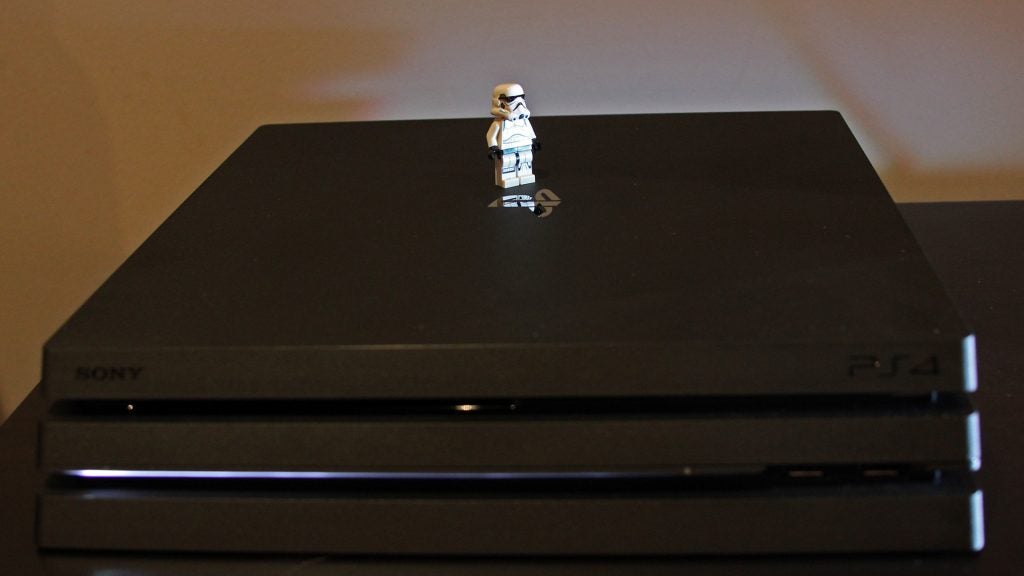
Sony PS4 Pro – Specifications
- Has 8GB of GDDR5 memory and 4.2 teraflops of graphical power
- Makes use of checkerboard 4K rendering for the many of its games
- Supersampling mode makes it ideal for 1080p display users
Any improvements to the physical design or feature set are fairly inconsequential in comparison to the PS4 Pro’s real advantage: an updated spec. The PS4 Pro has broadly the same eight-core AMD Jaguar CPU as the vanilla version, but running at 2.13GHz, not 1.6GHz. The basic system architecture is the same, as is the 8GB of GDDR5 RAM.
The extra punch comes from the PS4 Pro’s GPU, with the number of Graphics Core Next Computer Units doubled from 18 to 36 and clocked up from 800 to 911MHz. This increases raw graphics performance from 1.8 teraflops to 4.2 teraflops.
In fact, one of the PS4 Pro’s key features – HDR – doesn’t really use this extra power, which is why you’ll find the standard PS4 now supports it too. The more important task for the PS4 Pro’s supercharged GPU is running 4K graphics, or 1080p with more detail at smoother frame rates, if that’s what you prefer.
HDR provides better contrast, and a wider range of tones and colours. This improves the depth of the presentation, giving fantastically bright and vibrant highlights. As you’ll know if you’ve seen HDR video, it’s a more realistic picture with greater visual impact. 4K is a simple 2 x boost in resolution from 1080p to 2160p, giving PS4 Pro games incredible sharpness and clarity, with more detailed textures in some cases.
However, there are two things we need to mention. First, while the PS4 Pro is more powerful than the PS4, it isn’t quite powerful enough to run most games at 4K with a smooth 30fps – let alone 60fps – frame rate. As a result, many games actually run at a lower resolution, between 1080p and 1440p, and then are cleverly upscaled or run through a checkerboard rendering algorithm to deliver something that looks much like 4K.
Second, Sony has given developers a degree of freedom as to how they use the extra horsepower. Most offer a 4K resolution, but some give you a smoother frame rate or additional visual effects at the same 1080p. Some offer you a choice in the options menu, so you can prioritise clarity or frame rate.
What’s more, the latest 5.5 firmware update has added a brute-force Supersampling mode that forces PS4 Pros connected to a 1080p screen to render at a 4K resolution then downscale, smoothing out edges and giving Full HD pictures a cleaner, almost-4K look. Add Boost mode, which ensures that even games without PS4 Pro enhancements run faster on the model, and the PS4 is a pretty versatile beast.
In short, calling PS4 Pro a 4K PS4 console isn’t 100% accurate, ever so slightly overselling it to 4K TV owners and underselling it to those with a 1080p screen.
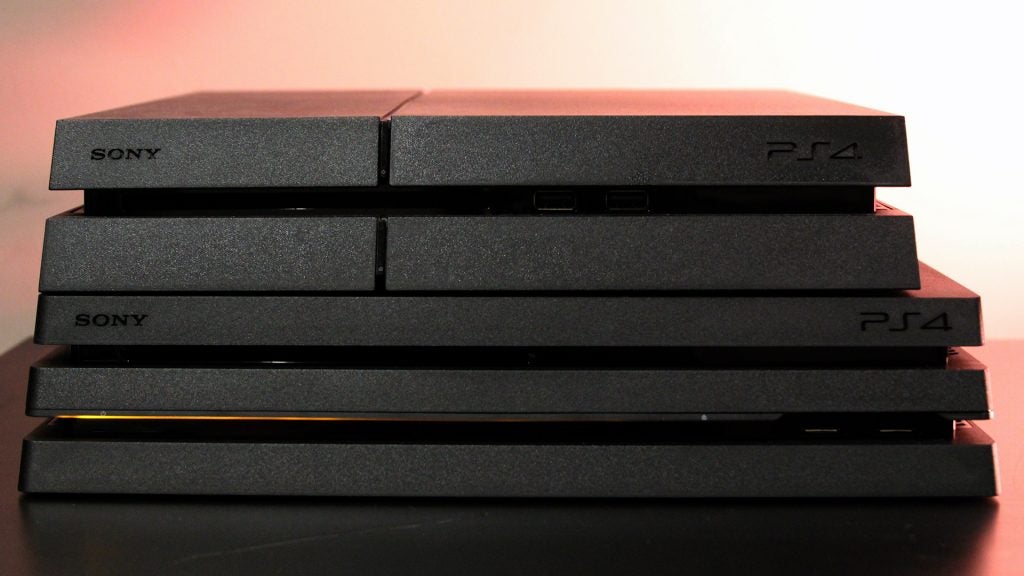
There’s one other reason to get the PS4 Pro, though: it has a SATA 3 hard drive instead of the PS4’s SATA 2 drive, which means faster loading times in many games.
Sony PS4 Pro – Controller
- The Dualshock 4 remains unchanged with the PS4 Pro
- An enhanced lightbar is now visible through the front of the controller
- Battery life of the Dualshock 4 remains very underwhelming
Sony tweaked the DualShock 4 controller for the Pro and Slim releases, and the new version is now the standard model. It’s easily Sony’s best ever controller, with comfortable, accurate analogue sticks, analogue triggers and left and right bumpers, and the addition of a translucent area at the top of the touchpad that lets light from the light bar show through.
In truth, the light bar doesn’t get a lot of love or use in most PS4 games, and the same goes for the touchpad – once pushed as a major plus for navigating in-game interfaces, but these days virtually ignored. However, the lightbar does play a role in PSVR games, particularly if you’re playing without Move or Aim controllers. The PlayStation camera can use it to track the position of the DualShock 4, turning it into a relatively capable motion controller.
If I had to choose between them then I’d say that the Xbox One X has the best controller, with its superb feel, near-perfect analogue sticks and powerful pulsing Impulse Trigger feedback. Nevertheless, the DualShock 4 is still fantastic. As someone who spends a lot of time playing across both consoles, I’m always comfortable and in full control with the lighter Sony pad in hand.
Related: PS4 Pro vs Xbox One X
Sony PS4 Pro – Entertainment and Blu-ray
- PS4 Pro does not have a 4K blu-ray player
- Supports all of the major streaming apps and services
- Music streaming services like Spotify are also included
You’d think that with its 4K slant the PS4 Pro would be a great console for fans of 4K video. Sadly, this is one area where there’s some disappointment.
For cost reasons, Sony didn’t fit a 4K Blu-ray drive – something you can find in both the Xbox One S and One X. The console is still happy to play Blu-ray discs, and upscaled Blu-rays continue to look good on a 4K screen. All the same, if you want a console that plays 4K Blu-rays in all their HDR glory, you’ll have no choice but to join the Microsoft team.
Related: God of War PS4
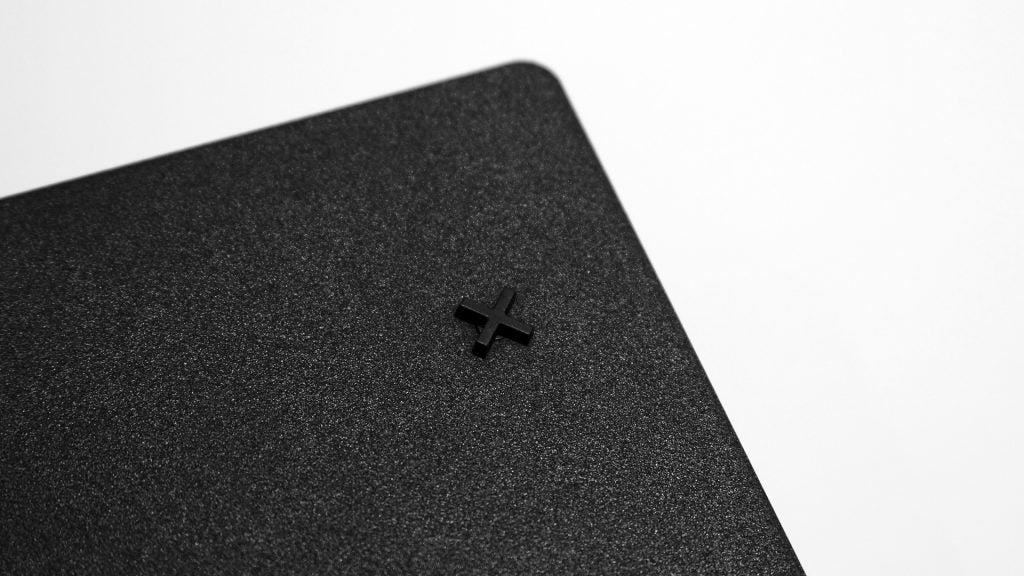
There’s better news when it comes to streaming services, with 4K streaming across Netflix and YouTube – although not currently Amazon Prime in the UK. Curiously, while Sony sells movies to stream through PS4 and PS4 Pro through the PlayStation Store, you can’t buy 4K versions. This seems bizarre when 4K versions are available on 4K Blu-ray, as with Spider-Man: Homecoming, Blade Runner 2049 or Justice League.
Sony PS4 Pro – VR
- PSVR is enhanced when using the PS4 Pro
- The headset has a selection of fantastic exclusives
- Setup is still finicky thanks to an abundance of wires
One of the big hopes for PS4 Pro was that it would supercharge the PlayStation VR experience, giving us more detail and improved performance while using Sony’s VR headset – but this hasn’t really panned out so far.
Some of the games we’ve tried across both PS4 versions run a little more smoothly with fewer texture pop-in issues, while there’s a little less blurring around the edge of the frame where PSVR sneakily culls detail to keep the frame rates up. We’re not saying that there aren’t differences. However, it won’t make Skyrim VR look like the full-on Skyrim Special Edition, for instance.
Owners of a PS4 Pro and a first-generation headset will also be aware of a major annoyance: the breakout box can’t pass on a proper 4K HDR signal, so you have to keep plugging-in and unplugging the HDMI cables while switching between 4K gaming and PSVR. Sony has fixed this for the PSVR refresh, but be aware if you have the original version.
Related: Best PSVR Games
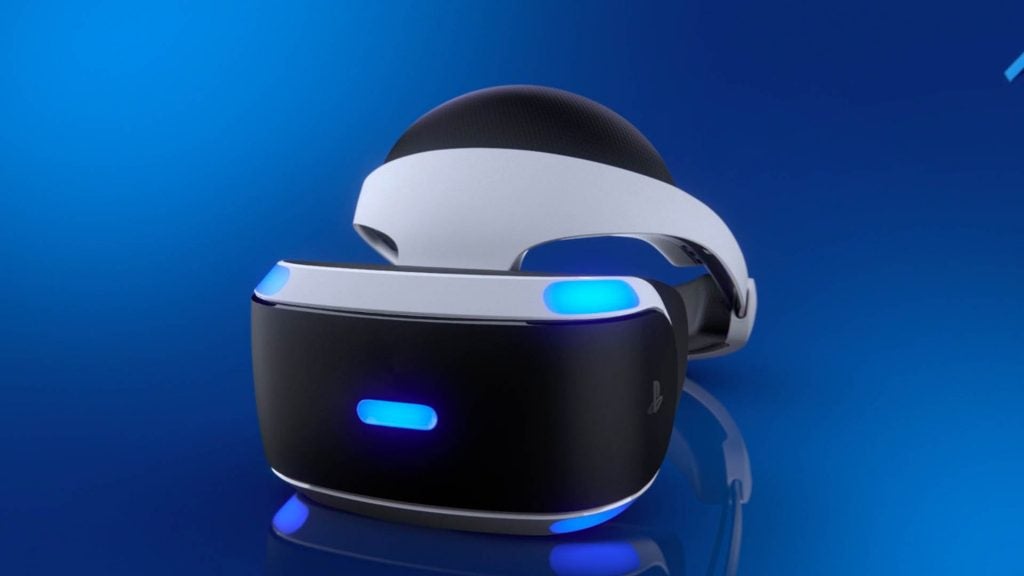
Sony PS4 Pro – Performance
Now we come to the nitty-gritty. The PS4 Pro isn’t as powerful as the Xbox One X. It very rarely delivers proper 4K output and, by PC standards, its hardware is ageing pretty fast – particularly the Jaguar CPU. Play certain key cross-platform titles across PS4 Pro and Xbox One X – Rise of the Tomb Raider, Assassin’s Creed: Origins, Star Wars: Battlefront II, Call of Duty: World War II – and the Xbox One X versions look that little bit better, with slightly richer, sharper 4K visuals at silky-smooth frame rates. The Xbox One X has more GPU horsepower to throw at the visuals, and that’s just how the maths stacks up.
But when you’re outside a direct comparison, the PS4 Pro still produces amazing-looking games. They might not be ‘true’ 4K, but they’re presentation is fantastic on a good 4K screen, and I suspect that all but the most discerning gamers will spot precious little difference. There’s also a sizable and definite leap in quality over the same games running in 1080p on a standard PS4, even when upscaled by a 4K TV. Once you’ve played on the PS4 Pro, you won’t want to go back.
Direct comparisons also miss a crucial point, in that the studios that have always best pushed the PS4’s performance are those developing games exclusively for Sony itself. We saw this on PS3 with Uncharted 3, The Last of Us, Killzone 3 and inFamous, and we’re seeing it again on PS4 with Uncharted 4, Uncharted: The Lost Legacy and Horizon: Zero Dawn. You’ll struggle to find any game on any console that out-dazzles those last two titles. On a big screen 4K TV with HDR, they’re as jaw-droppingly impressive as gaming gets.
Sony has also done right by 1080p TV owners, encouraging developers to put higher detail 1080p modes in some PS4 games, as with Rise of the Tomb Raider, or using the additional performance to maintain a smooth 60fps frame rate. Boost mode and Supersampling mean that even at 1080p, you can get crisper visuals and smoother, more responsive action.
You should buy the PS4 Pro if…
You want gaming to go beyond 1080p: The PS4 Pro is primarily designed for consumers who are in possession of a 4K display, and are able to take advantage of games and media that are capable of reaching a 4K resolution. While the PS4 Pro seldom reaches a full 3840 x 2160, it makes use of checkerboard rendering to give the illusion that it’s possible.
You want to play a fantastic selection of games: In terms of exclusives, the PS4 Pro is one of the best consoles ever made. Bloodborne, God of War, Marvel’s Spider-Man and Gravity Rush 2 are all masterpieces, and even then I’ve barely scratched the surface of what this platform has to offer. If you’ve missed out on a generation, the PS4 Pro will undoubtedly spoil you rotten.
You aren’t worried about being next-gen: The PS5 is already on the market, so new owners of the PS4 Pro may be worried they’re missing out on the latest games. If this aura of FOMO isn’t something you’re bothered about, the PS4 Pro is a console which is absolutely worth owning.
You should not buy the PS4 Pro if…
You don’t have a 4K display: While the PS4 Pro is capable of supersampling, it isn’t the same as viewing a native 4K image. Owners of a standard display will find some benefits when using the PS4 Pro, such as performance improvements, but the best experience is served for those with a 4KTV.
Its exclusives aren’t your cup of tea: I’d be very, very shocked if nothing in the PS4 Pro exclusive library tickles your fancy. However, if that ends up being the case, you might be best opting for the Xbox One or Nintendo Switch.

